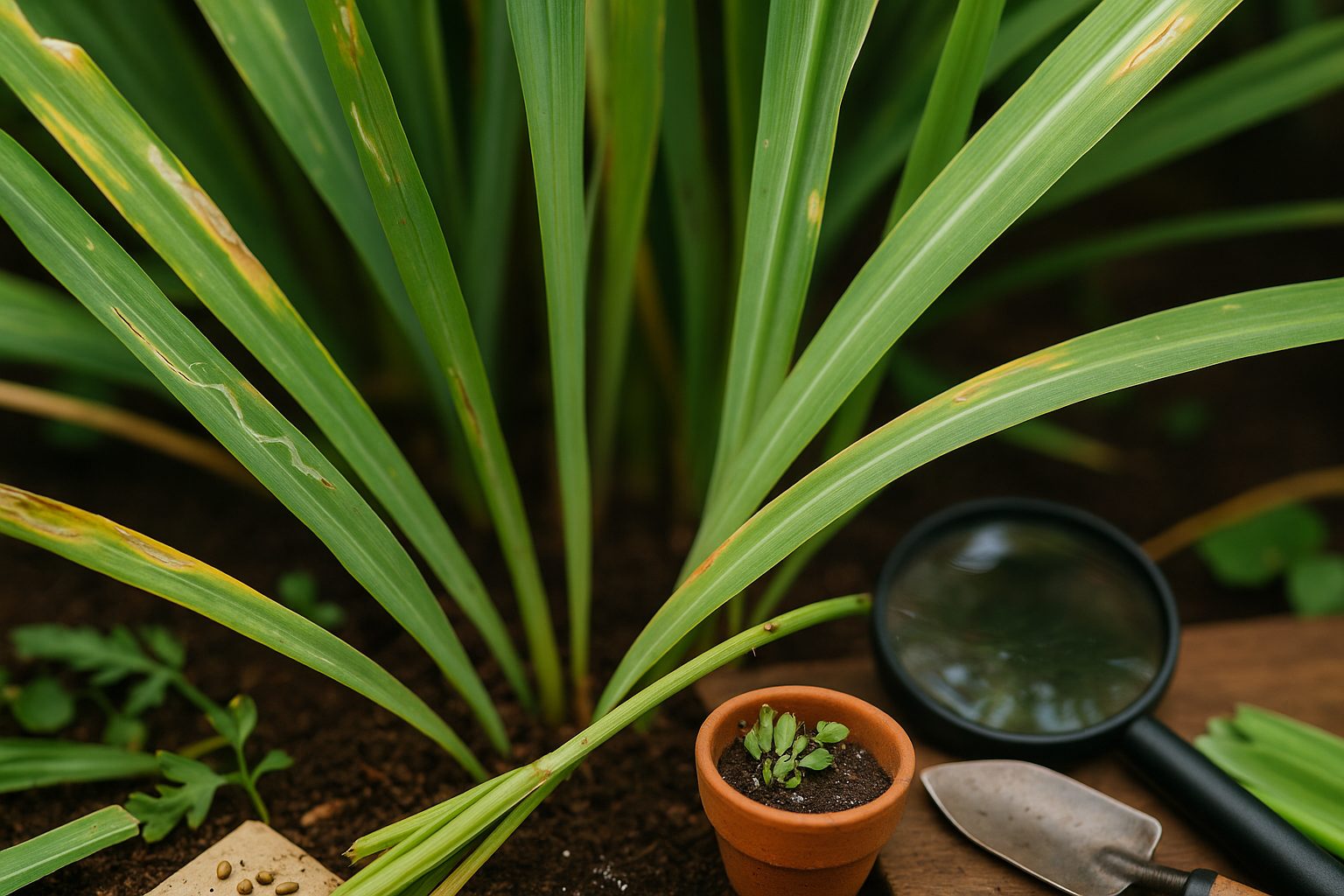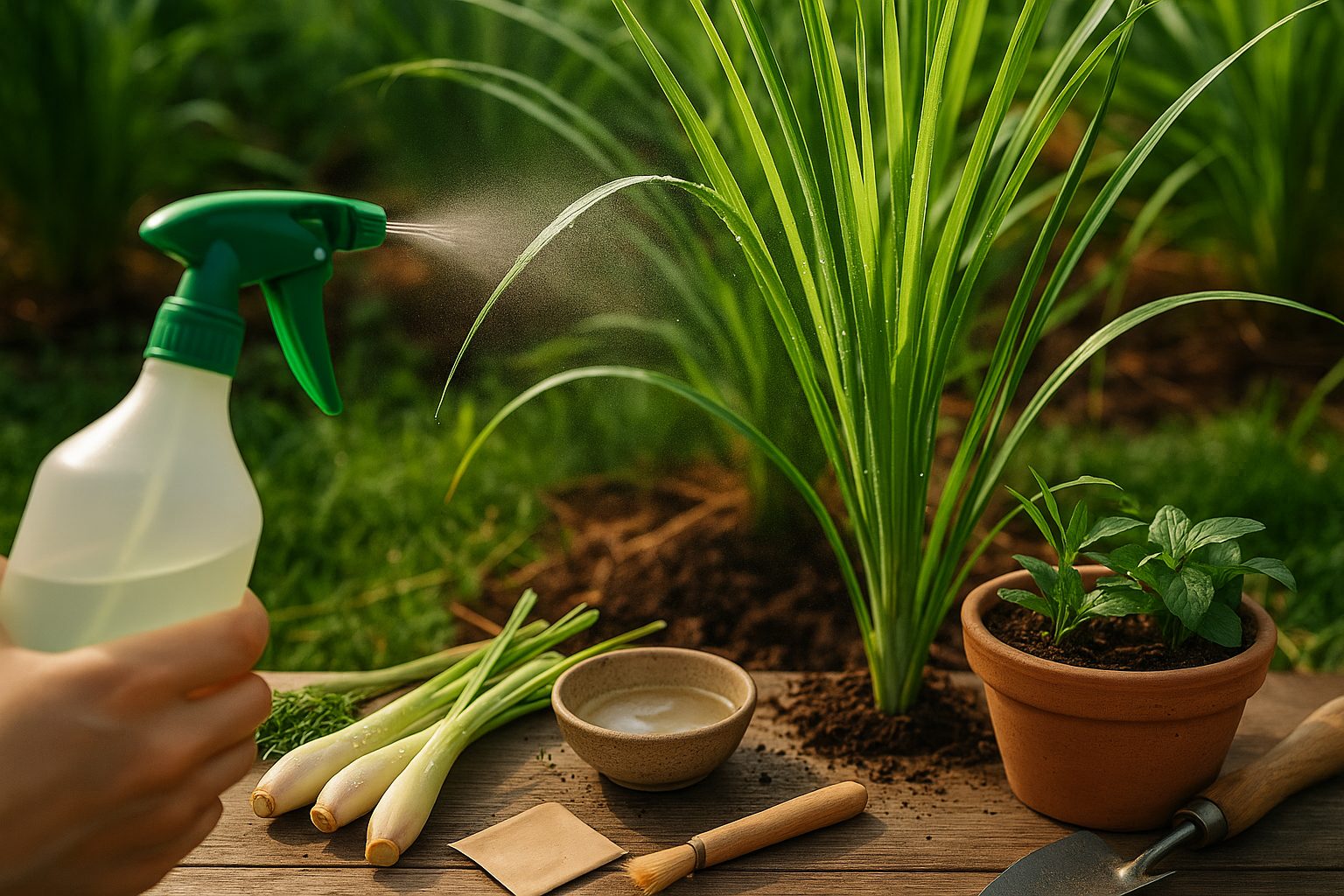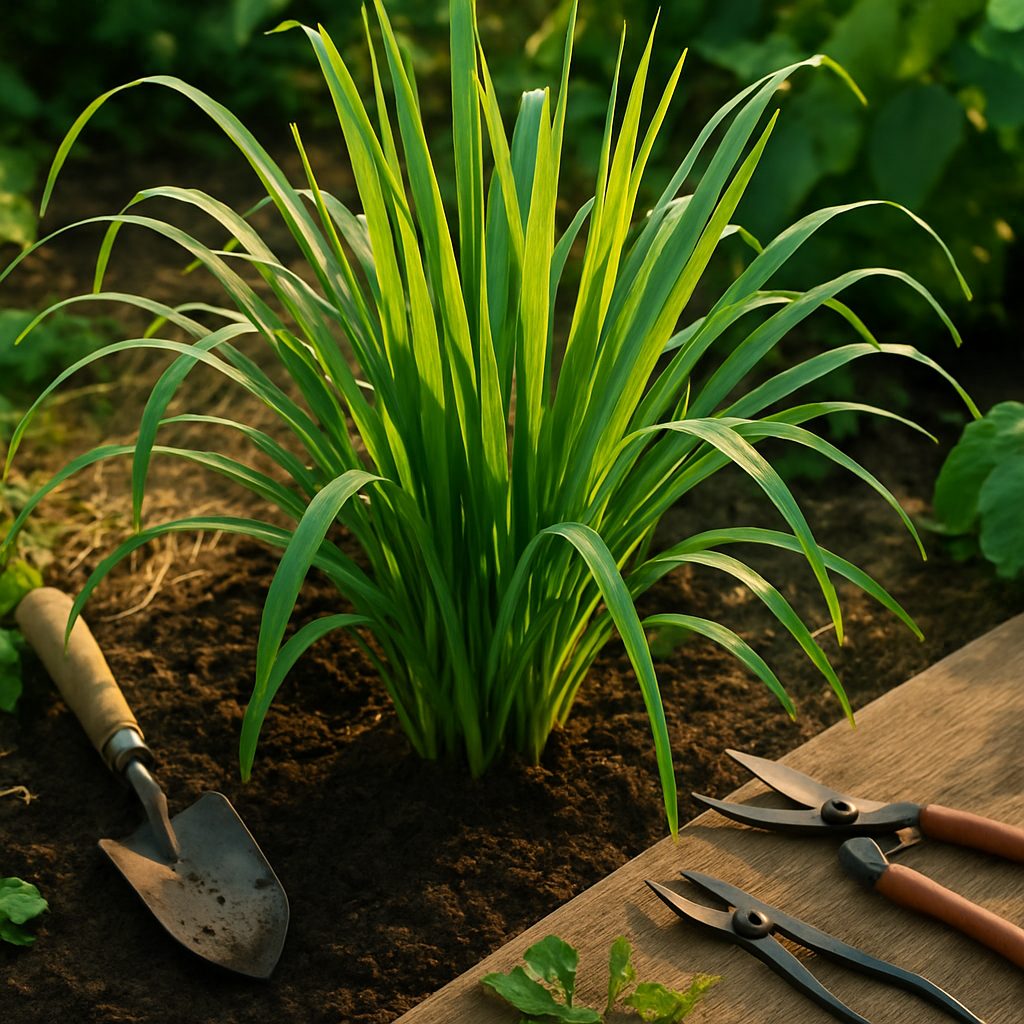Identifying Lemongrass Pest Damage

Lemongrass pests can turn healthy, fragrant clumps into patchy, struggling plants faster than you might expect. Early detection is key if you want to keep your lemongrass thriving, and that starts with knowing the tell-tale signs of trouble.
One of the first things to look for is yellowing leaves or patches of brown—these colors aren’t normal for vibrant, green lemongrass. Aphids and spider mites often cause this by sucking plant sap, which leads to discolored, curling, or wilting foliage. If you notice leaves with white streaks or spots, leaf miners might be at work, tunneling through the inside of the blades and leaving a silvery trail.
Stunted growth or thin, weak stems can signal the presence of root-knot nematodes, microscopic pests that feed below the soil and rob the plant of nutrients. Examining your lemongrass up close can reveal small insects clustered on stems or the undersides of leaves—greenish aphids, reddish-brown mites, or even tiny black thrips. These pests are often visible with a careful inspection or a handheld magnifying glass.
You might also see sticky residue (honeydew) left behind by aphids and scale insects, or even sooty mold growing on the residue. Regularly inspect the base of the plant and inside the dense leaves to spot these problems early. If leaves are ragged, chewed, or have missing pieces, grasshoppers or caterpillars could be feasting at night.
Catching these lemongrass pest symptoms early can make all the difference, giving you a head start on using natural control methods before the infestation gets out of hand.
Common Pests That Affect Lemongrass
Lemongrass, while generally robust, can fall prey to an array of pests, each leaving their own signature damage. Indoors, you’ll most often encounter spider mites, which are tiny, reddish or pale specks clustering on the undersides of leaves; their tell-tale signs include fine webbing and speckled yellow leaves.
Scale insects appear as small brown or white bumps stuck to stems. They suck sap and can cause yellowing and eventual leaf drop. Mealybugs, resembling tiny cotton balls, nestle in leaf joints and exude sticky honeydew, which attracts ants and causes stunted growth.
Fungus gnats are another indoor foe—their adults look like tiny black flies, but it’s actually their larvae in the soil that harm roots and weaken young plants. Outside, fruit flies occasionally target older or overripe stalks, appearing as small tan flies, though they are less common.
Aphids, present both indoors and outdoors, gather in clusters and can be green, black, or orange; they suck sap, leading to curled and distorted leaves. Whiteflies, easily spotted as small moth-like insects fluttering up when disturbed, feed on the undersides of leaves, leaving sticky residue and yellow spots.
Finally, caterpillars—sometimes overlooked—chew irregular holes in leaves and are often visible themselves resting or feeding.
When diagnosing damage, look closely:
- Sticky residue (honeydew) points to sap-suckers like mealybugs, scale insects, or aphids.
- Webbing and fine dots indicate spider mites.
- Chewed edges or holes are the calling card of caterpillars.
- Yellowing and wilt from below the soil may mean fungus gnat larvae.
By matching signs with the pests’ appearance and checking where your lemongrass is growing, you can narrow down which culprit is at work and take action early to protect your plant.
Effective Lemongrass Pest Treatment Strategies

Dealing with pests on lemongrass calls for a careful approach, especially if you use it in cooking. Organic methods are the safest and often effective choice. First, inspect your plants regularly for signs of aphids, spider mites, or mealybugs—look for curled leaves or sticky residue.
For minor infestations, try manual removal by spraying leaves with a strong stream of water or picking off pests by hand. For more stubborn pests, mix a solution of neem oil (about 2 tablespoons per gallon of water) and spray the leaves thoroughly, making sure to reach the undersides where bugs like to hide.
Insecticidal soap is another safe option; simply dilute the soap according to the label instructions and apply with a spray bottle during the cooler parts of the day to avoid leaf burn. Reapply every 5–7 days as needed, and always wash lemongrass before harvesting.
If pests persist and you’re considering chemical pesticides, choose products labeled for edible herbs and follow the instructions exactly. Pay extra attention to pre-harvest intervals—the required time to wait between spraying and picking. Keep in mind that chemical residues can remain on the plant, so organic methods are generally better when you’re using lemongrass in food and want to protect pollinators or beneficial insects in your garden.
Regardless of the method, always wear gloves and protective clothing when handling any sprays. Avoid applying treatments during windy or rainy weather to prevent drift and runoff. Combining regular plant checks with organic sprays and prompt, careful action offers the safest defense for both your lemongrass and your dinner table.
Preventing Future Pest Problems
Keeping future pest problems at bay starts with creating an environment where lemongrass thrives and pests struggle. Water your plants carefully—too much moisture can invite fungal issues and root rot, while too little can stress the plant, making it more vulnerable.
Improve air circulation by pruning crowded growth and ensuring each lemongrass clump has enough space; this dries foliage quickly after rain and discourages mildew. Inspect your plants regularly for early signs of trouble like chewed leaves or sticky residue, catching infestations before they take hold.
Planting lemongrass with enough distance between each cluster also helps—crowded conditions trap humidity and make it easier for pests to spread. Healthy soil is your first line of defense: mix in compost to nourish roots, encourage beneficial soil microbes, and boost your plants’ natural pest resistance.
Some lemongrass varieties are bred to be more pest-resistant, so check with local nurseries for recommendations suited to your area. Companion planting can offer extra protection—growing lemongrass near basil or marigolds, for example, helps repel some common insects and brings beneficial pollinators to your garden.
A thriving, well-maintained lemongrass patch not only looks attractive but is naturally less likely to suffer from stubborn pests, so investing in a little regular care pays off all season long.
Integrated Pest Management (IPM) for Lemongrass
Integrated Pest Management (IPM) is a safer, more sustainable way to protect your lemongrass from pests without relying solely on chemical pesticides. By combining methods like monitoring, prevention, intervention, and evaluation, IPM minimizes environmental impact and promotes healthy plant growth.
Start by regularly inspecting your lemongrass for signs of pests such as grasshoppers or aphids, checking both leaves and stems. Early detection is key.
Prevention
Focus on cultural practices to keep pests at bay:
- Grow lemongrass in well-drained soil.
- Space plants to allow good airflow.
- Remove debris that can harbor pests.
Introducing beneficial insects like ladybugs can help control aphid populations, while encouraging birds in your garden naturally manages larger pests.
Mechanical Controls
Use direct methods to reduce damage without chemicals, such as hand-picking visible insects or using fine nets to protect young plants.
Intervention
If intervention becomes necessary, choose organic sprays—like neem oil—as a last resort. Apply them carefully and only if other methods aren’t enough.
Evaluation
After each action, evaluate the results by checking if pest numbers have decreased and your plants look healthier.
Sample IPM Plan for Lemongrass
- Inspect weekly for pests.
- Keep beds free from weeds.
- Add mulch to deter insects.
- Welcome natural predators.
- Use insecticidal soap on persistent infestations.
By blending these approaches and keeping records of what works, you’ll maintain vibrant lemongrass while supporting a balanced garden ecosystem.
When to Seek Help: Severe or Persistent Infestations
If you’re dealing with pests that keep coming back despite your best DIY efforts, or if the infestation is widespread—like spotting rodents in multiple rooms or discovering termites damaging your structure—it’s time to call in the professionals. Similarly, if you’re concerned about the safety of pets or edible plants around your home, experts can tailor treatments to your specific needs.
Look for companies with positive reviews, proper licensing, and a willingness to discuss safe, food-friendly solutions. Don’t hesitate to ask about the chemicals they use, get details about their process, and confirm whether their treatments are child- or pet-safe.
Remember, persistent pests aren’t a reflection of your cleanliness—some infestations are simply too tough to handle alone. Seeking help is a smart step that protects your property and peace of mind, so feel confident reaching out when the problem feels overwhelming.
